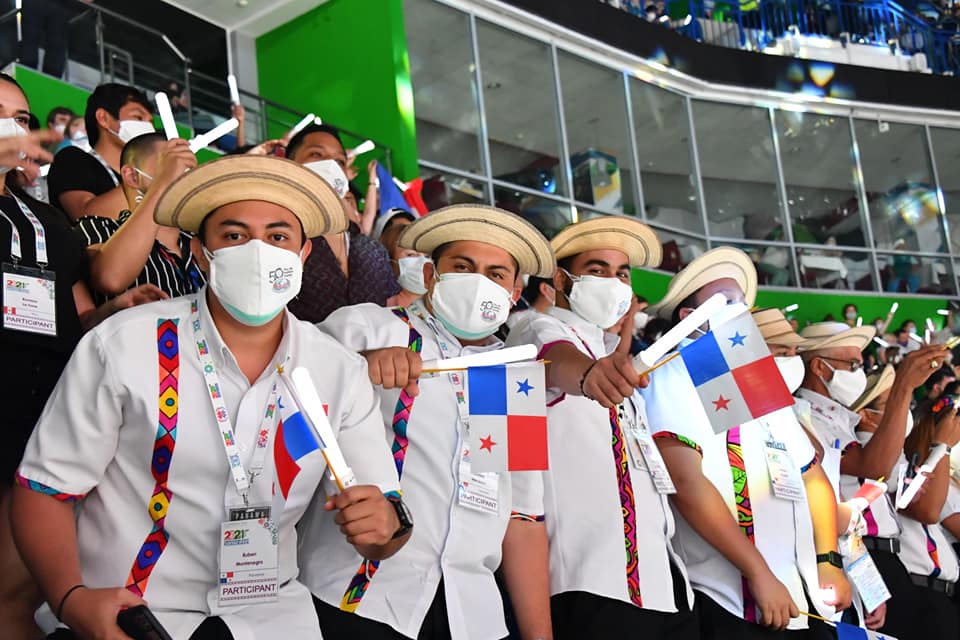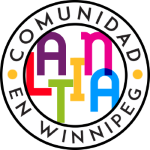Perfil en Destaque
Interview by Bethy Sanchez.
Christian Hidalgo-Mazzei
Christian Hidalgo-Mazzei, Presidente de CIOFF Canadá Director y Productor Artístico de Folklorama en Winnipeg, Canadá.
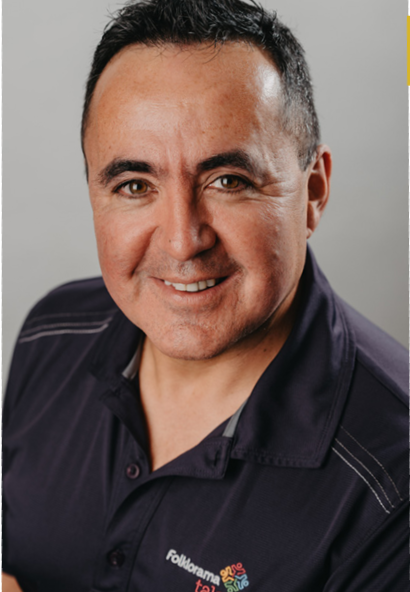
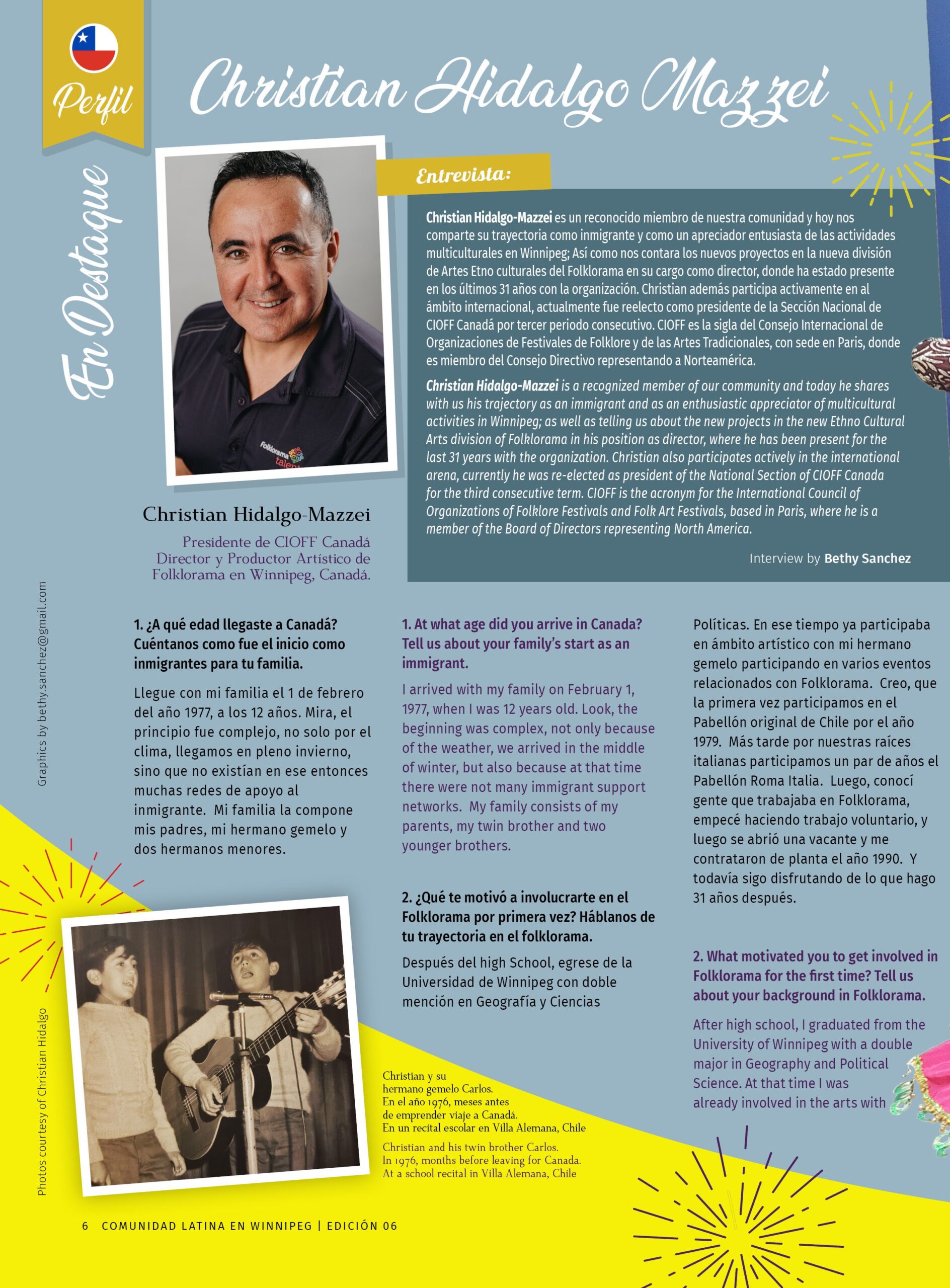
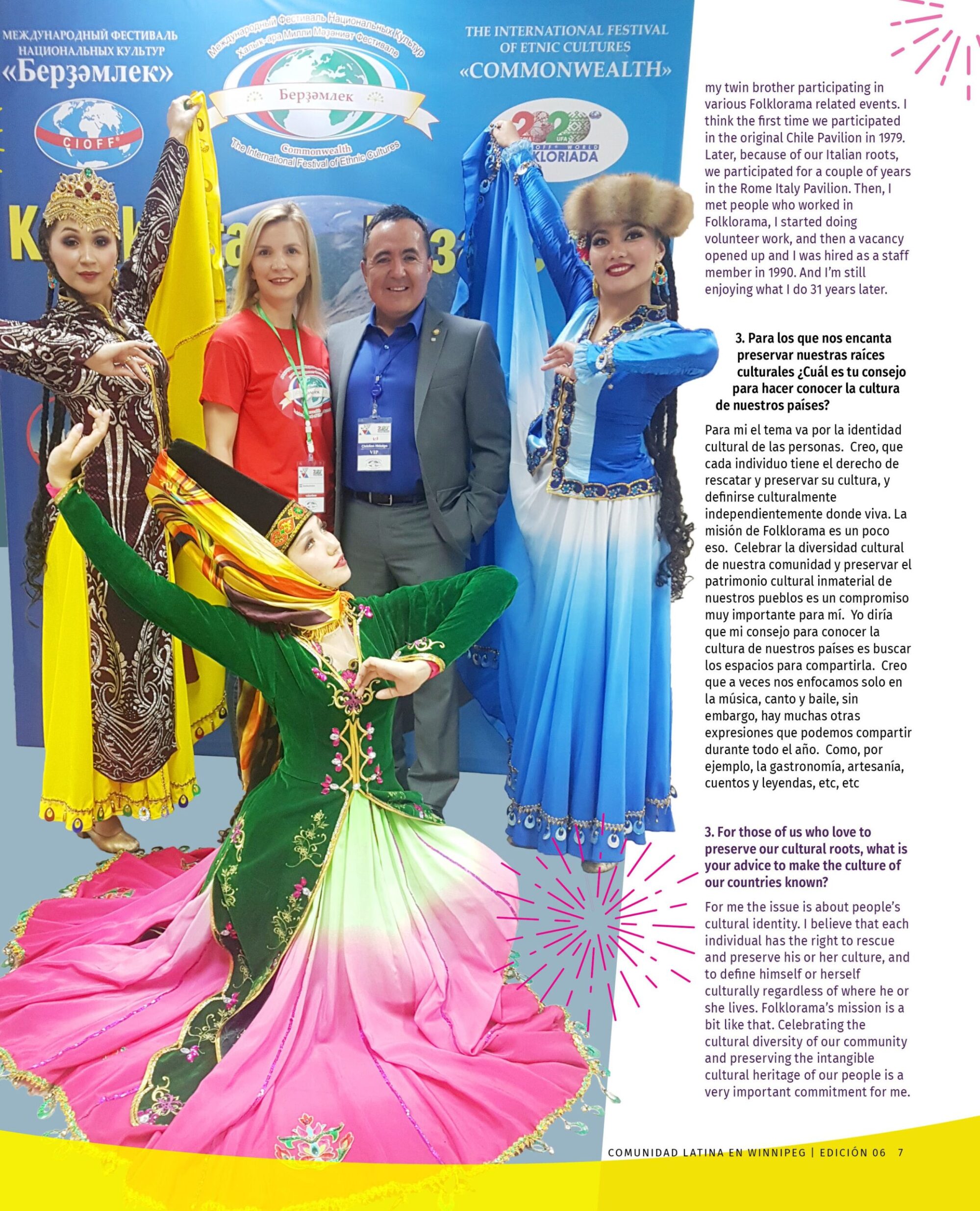
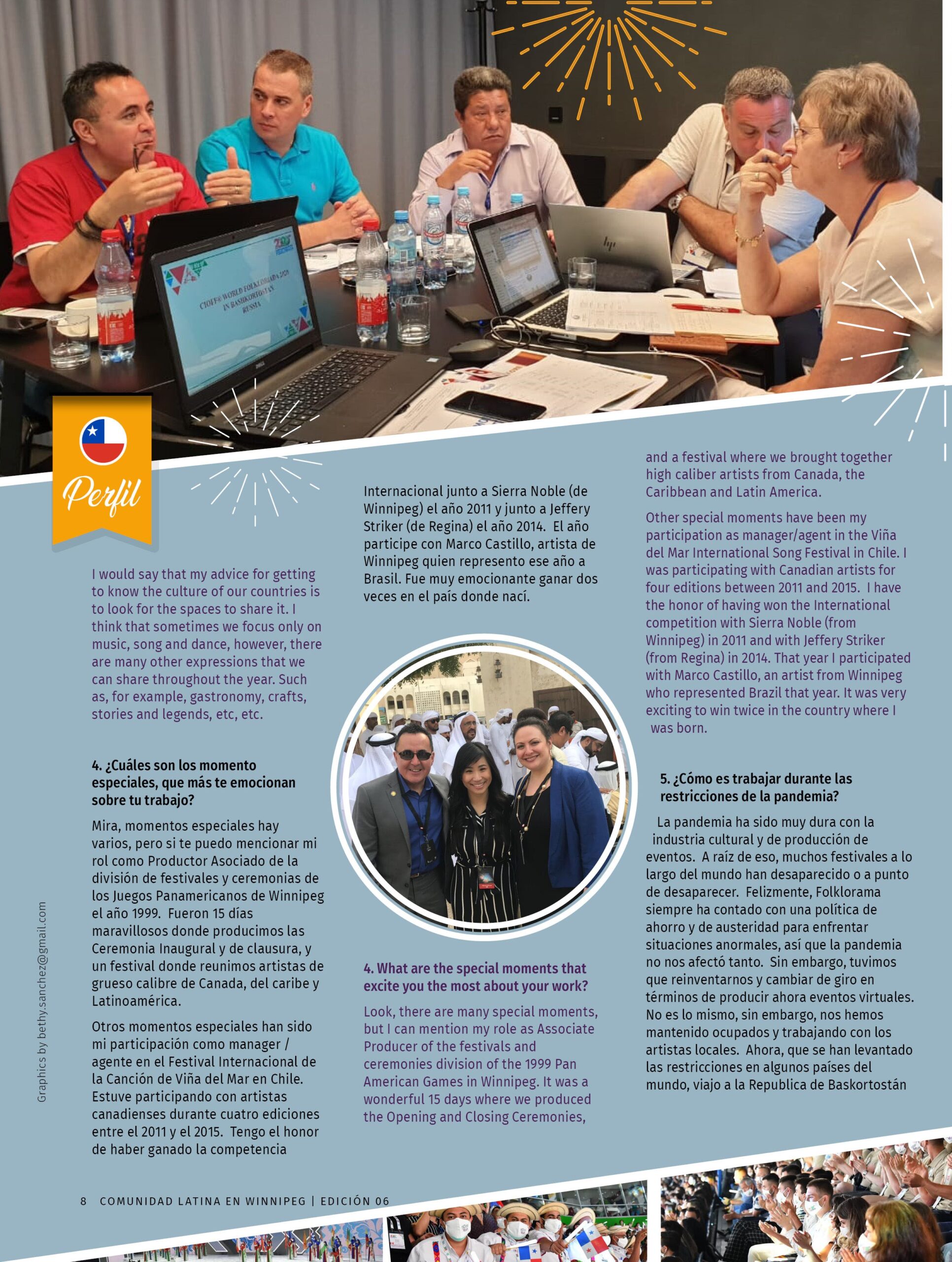
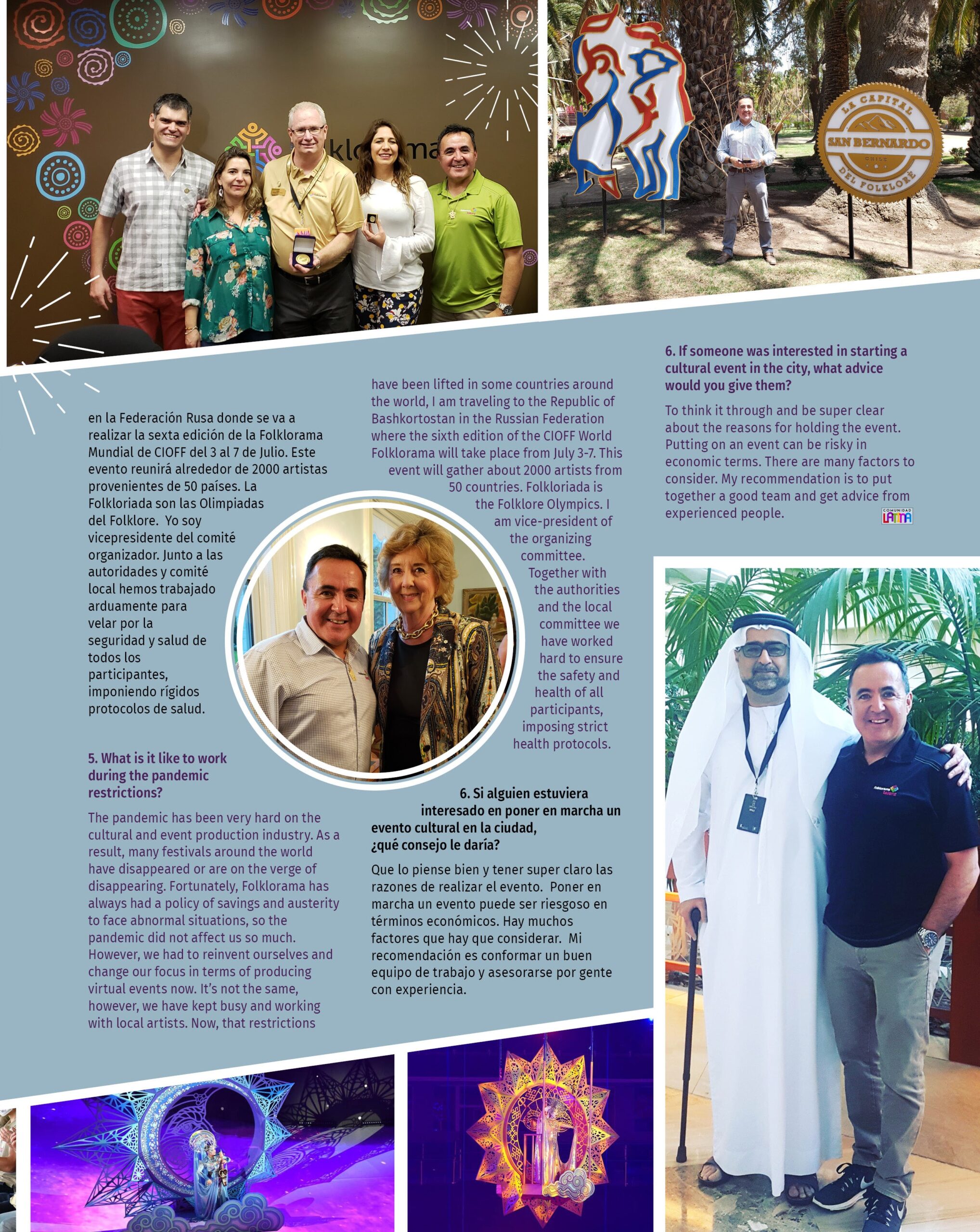
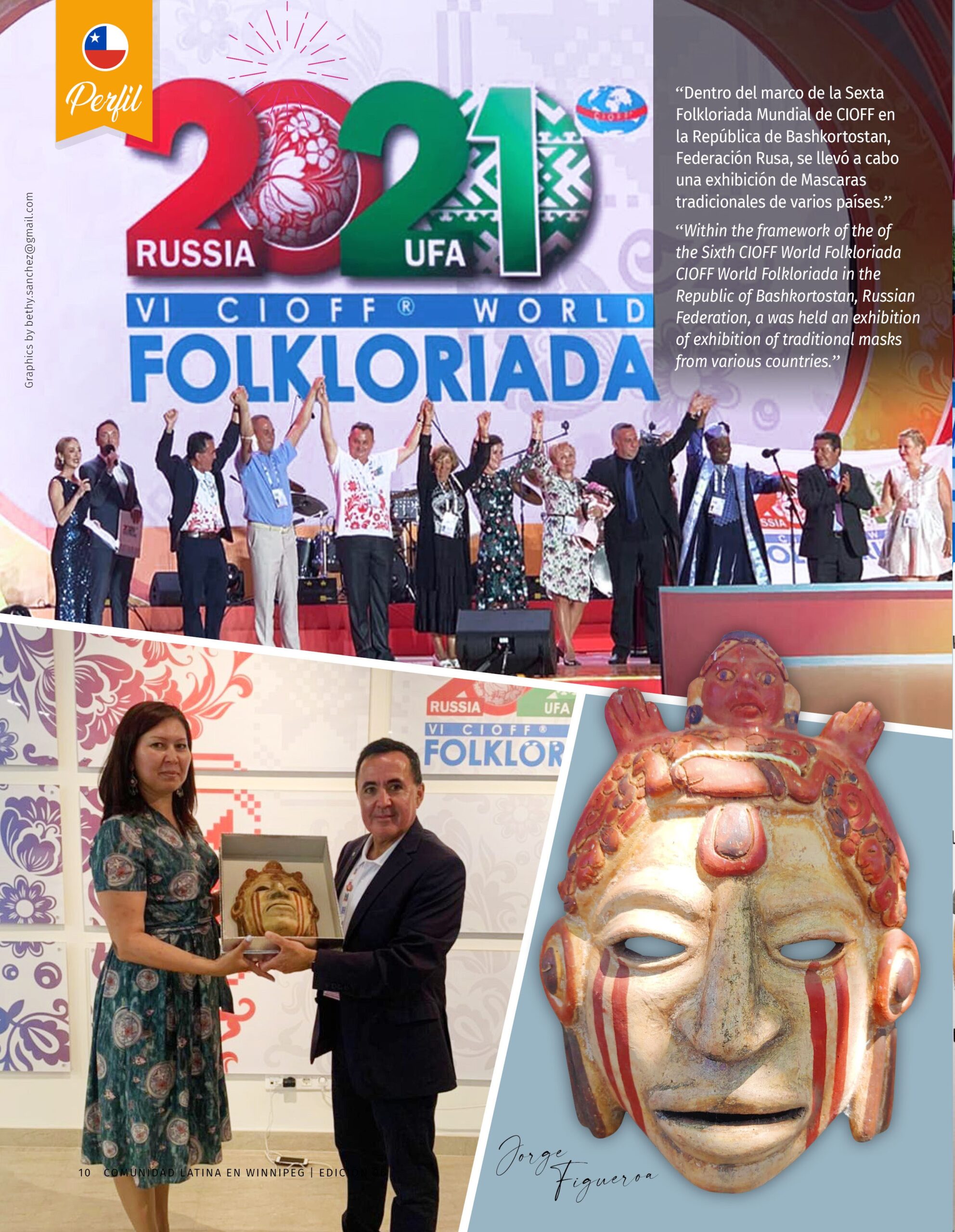
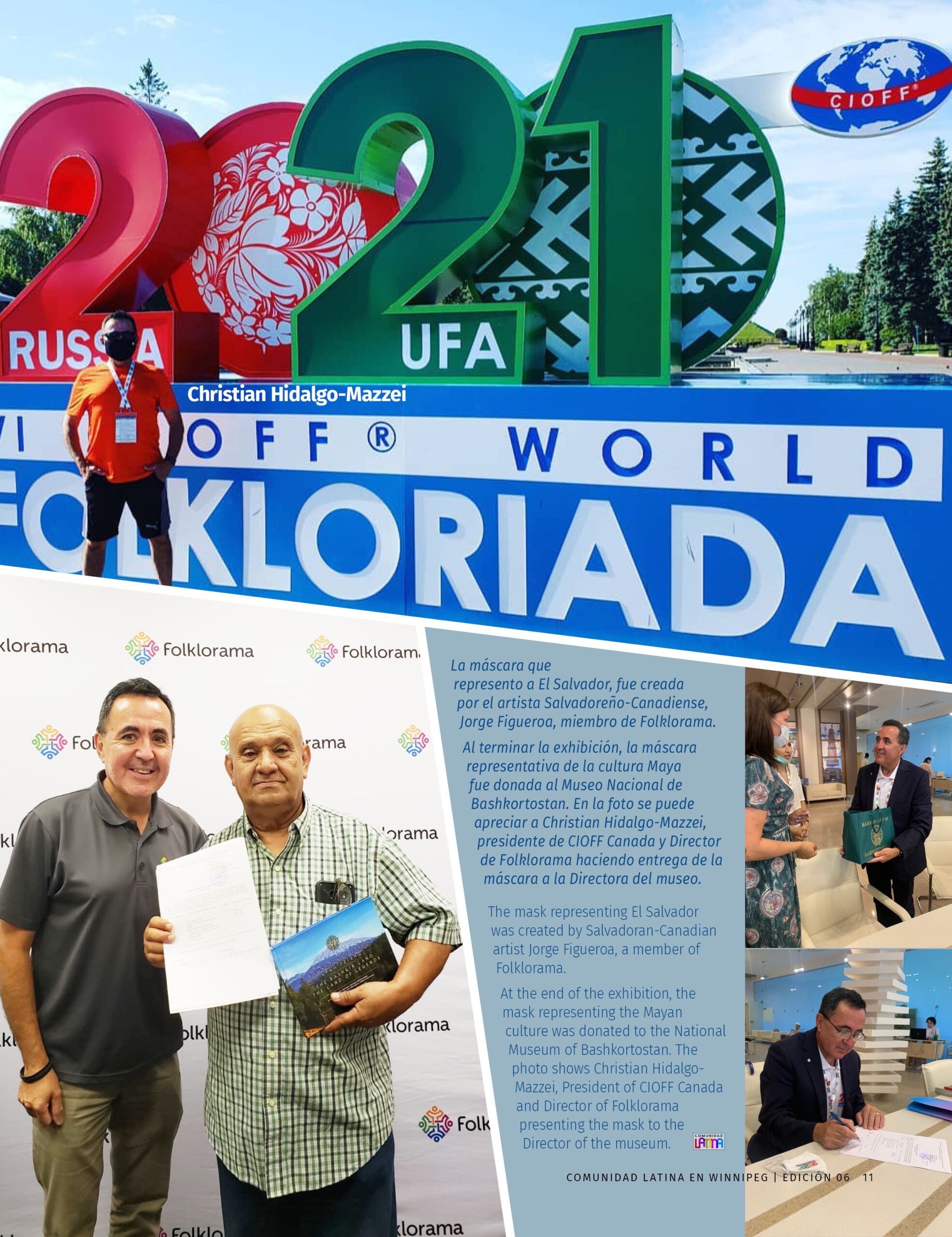
Christian Hidalgo-Mazzei es un reconocido miembro de nuestra comunidad y hoy nos comparte su trayectoria como inmigrante y como un apreciador entusiasta de las actividades multiculturales en Winnipeg; Así como nos contara los nuevos proyectos en la nueva división de Artes Etno culturales del Folklorama en su cargo como director, donde ha estado presente en los últimos 31 años con la organización. Christian además participa activamente en al ámbito internacional, actualmente fue reelecto como presidente de la Sección Nacional de CIOFF Canadá por tercer periodo consecutivo. CIOFF es la sigla del Consejo Internacional de Organizaciones de Festivales de Folklore y de las Artes Tradicionales, con sede en Paris, donde es miembro del Consejo Directivo representando a Norteamérica.
Christian Hidalgo-Mazzei is a recognized member of our community and today he shares with us his trajectory as an immigrant and as an enthusiastic appreciator of multicultural activities in Winnipeg; as well as telling us about the new projects in the new Ethno Cultural Arts division of Folklorama in his position as director, where he has been present for the last 31 years with the organization. Christian also participates actively in the international arena, currently he was re-elected as president of the National Section of CIOFF Canada for the third consecutive term. CIOFF is the acronym for the International Council of Organizations of Folklore Festivals and Folk Art Festivals, based in Paris, where he is a member of the Board of Directors representing North America.
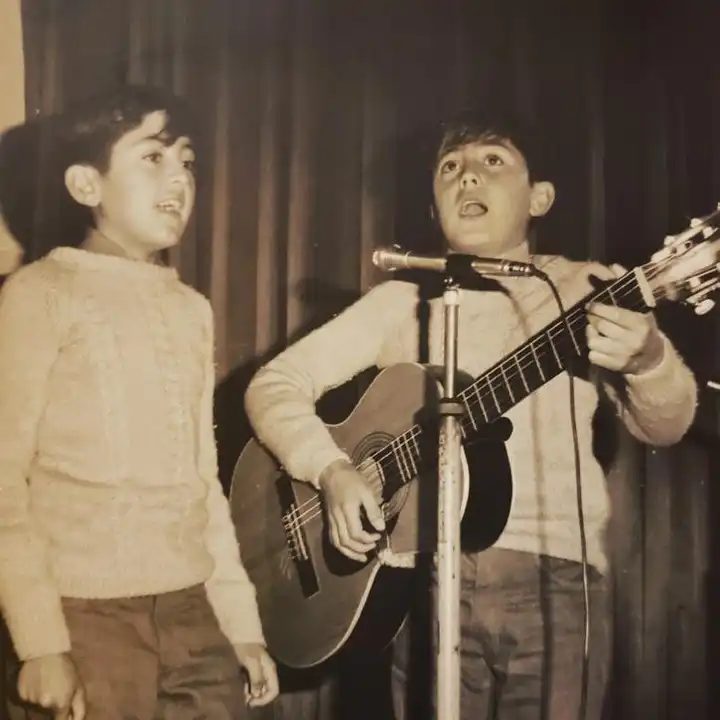
1. ¿A qué edad llegaste a Canadá? Cuéntanos como fue el inicio como inmigrantes para tu familia.
R. Llegue con mi familia el 1 de febrero del año 1977, a los 12 años. Mira, el principio fue complejo, no solo por el clima, llegamos en pleno invierno, sino que no existían en ese entonces muchas redes de apoyo al inmigrante. Mi familia la compone mis padres, mi hermano gemelo y dos hermanos menores.
1. At what age did you arrive in Canada? Tell us about your family’s start as an immigrant.
R. I arrived with my family on February 1, 1977, when I was 12 years old. Look, the beginning was complex, not only because of the weather, we arrived in the middle of winter, but also because at that time there were not many immigrant support networks. My family consists of my parents, my twin brother and two younger brothers.
2. ¿Qué te motivó a involucrarte en el Folklorama por primera vez? Háblanos de tu trayectoria en el folklorama.
R. Después del high School, egrese de la Universidad de Winnipeg con doble mención en Geografía y Ciencias Políticas. En ese tiempo ya participaba en ámbito artístico con mi hermano gemelo participando en varios eventos relacionados con Folklorama. Creo, que la primera vez participamos en el Pabellón original de Chile por el año 1979. Más tarde por nuestras raíces italianas participamos un par de años el Pabellón Roma Italia. Luego, conocí gente que trabajaba en Folklorama, empecé haciendo trabajo voluntario, y luego se abrió una vacante y me contrataron de planta el año 1990. Y todavía sigo disfrutando de lo que hago 31 años después.
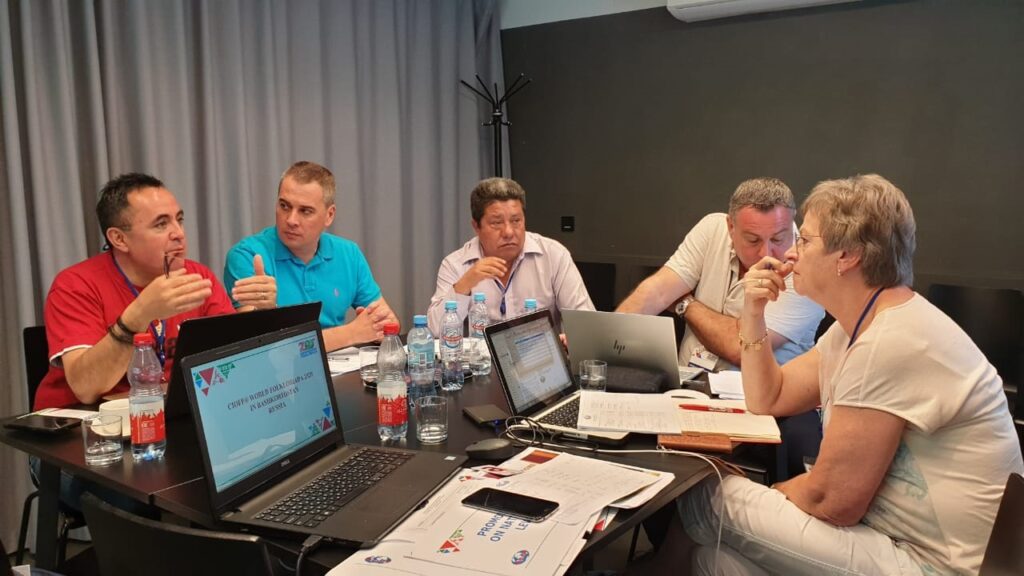
2. What motivated you to get involved in Folklorama for the first time? Tell us about your background in Folklorama.
R. After high school, I graduated from the University of Winnipeg with a double major in Geography and Political Science. At that time, I was already involved in the arts with my twin brother participating in various Folklorama related events. I think the first time we participated in the original Chile Pavilion in 1979. Later, because of our Italian roots, we participated for a couple of years in the Rome Italy Pavilion. Then, I met people who worked in Folklorama, I started doing volunteer work, and then a vacancy opened up and I was hired as a staff member in 1990. And I’m still enjoying what I do 31 years later.
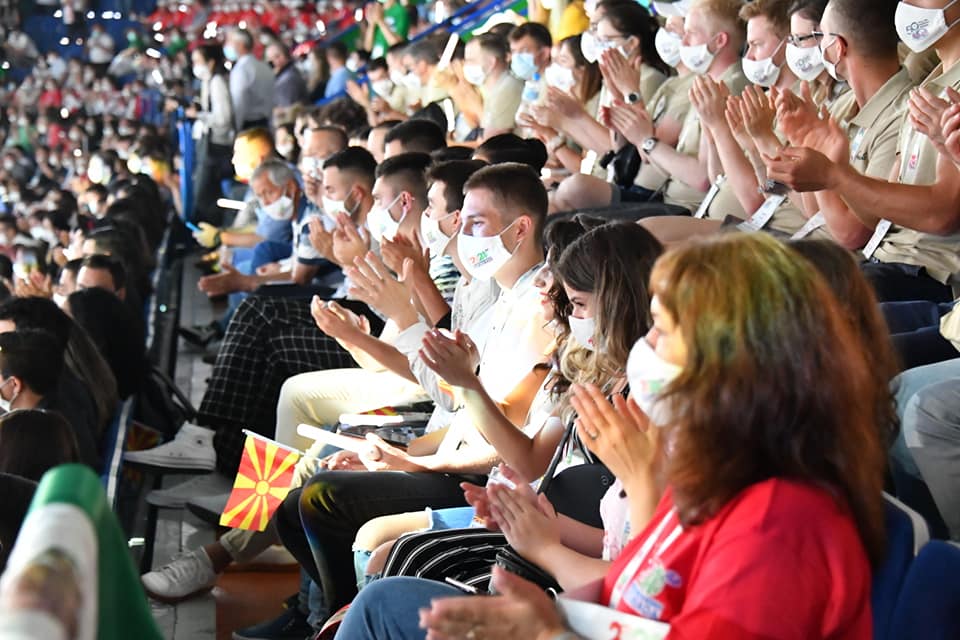
3. Para los que nos encanta preservar nuestras raíces culturales ¿Cuál es tu consejo para hacer conocer la cultura de nuestros países?
R. Para mi el tema va por la identidad cultural de las personas. Creo, que cada individuo tiene el derecho de rescatar y preservar su cultura, y definirse culturalmente independientemente donde viva. La misión de Folklorama es un poco eso. Celebrar la diversidad cultural de nuestra comunidad y preservar el patrimonio cultural inmaterial de nuestros pueblos es un compromiso muy importante para mí.
Yo diría que mi consejo para conocer la cultura de nuestros países es buscar los espacios para compartirla. Creo que a veces nos enfocamos solo en la música, canto y baile, sin embargo, hay muchas otras expresiones que podemos compartir durante todo el año. Como, por ejemplo, la gastronomía, artesanía, cuentos y leyendas, etc, etc
3. For those of us who love to preserve our cultural roots, what is your advice to make the culture of our countries known?
R. For me the issue is about people’s cultural identity. I believe that each individual has the right to rescue and preserve his or her culture, and to define himself or herself culturally regardless of where he or she lives. Folklorama’s mission is a bit like that. Celebrating the cultural diversity of our community and preserving the intangible cultural heritage of our people is a very important commitment for me.
I would say that my advice for getting to know the culture of our countries is to look for the spaces to share it. I think that sometimes we focus only on music, song and dance, however, there are many other expressions that we can share throughout the year. Such as, for example, gastronomy, crafts, stories and legends, etc, etc.
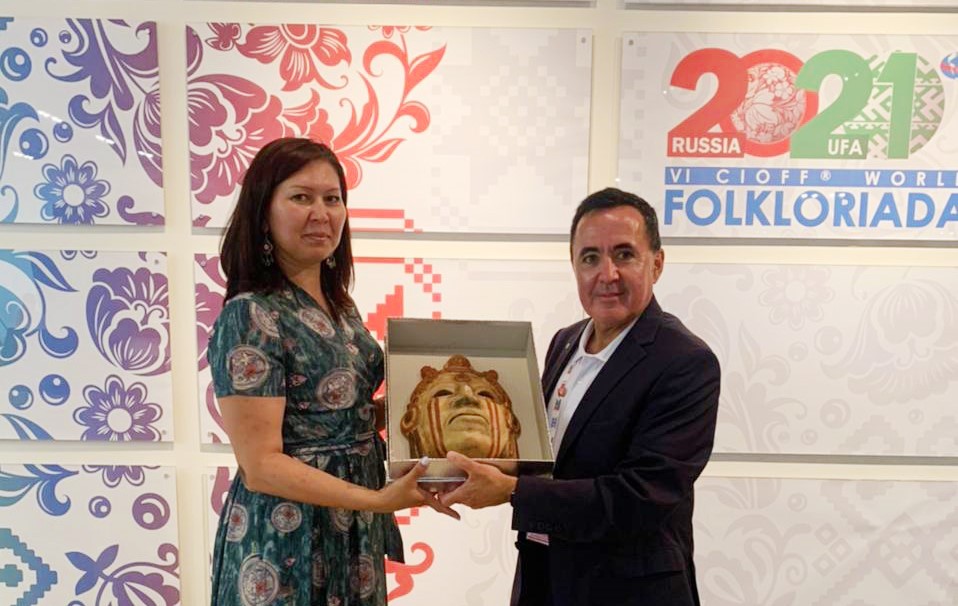
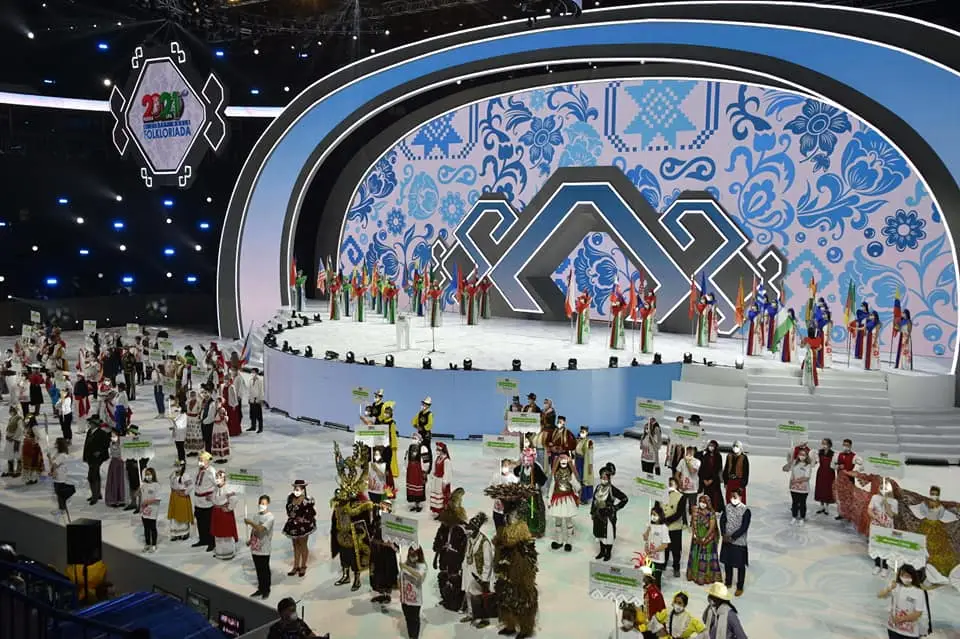
4. ¿Cuáles son los momento especiales, que más te emocionan sobre tu trabajo?
R. Mira, momentos especiales hay varios, pero si te puedo mencionar mi rol como Productor Asociado de la división de festivales y ceremonias de los Juegos Panamericanos de Winnipeg el año 1999. Fueron 15 días maravillosos donde producimos las Ceremonia Inaugural y de clausura, y un festival donde reunimos artistas de grueso calibre de Canada, del caribe y Latinoamérica. Otros momentos especiales han sido mi participación como manager / agente en el Festival Internacional de la Canción de Viña del Mar en Chile. Estuve participando con artistas canadienses durante cuatro ediciones entre el 2011 y el 2015. Tengo el honor de haber ganado la competencia Internacional junto a Sierra Noble (de Winnipeg) el año 2011 y junto a Jeffery Striker (de Regina) el año 2014. El año participe con Marco Castillo, artista de Winnipeg quien represento ese año a Brasil. Fue muy emocionante ganar dos veces en el país donde nací.
4. What are the special moments that excite you the most about your work?
R. Look, there are many special moments, but I can mention my role as Associate Producer of the festivals and ceremonies division of the 1999 Pan American Games in Winnipeg. It was a wonderful 15 days where we produced the Opening and Closing Ceremonies, and a festival where we brought together high caliber artists from Canada, the Caribbean and Latin America. Other special moments have been my participation as manager/agent in the Viña del Mar International Song Festival in Chile. I was participating with Canadian artists for four editions between 2011 and 2015. I have the honor of having won the International competition with Sierra Noble (from Winnipeg) in 2011 and with Jeffery Striker (from Regina) in 2014. That year I participated with Marco Castillo, an artist from Winnipeg who represented Brazil that year. It was very exciting to win twice in the country where I was born.
